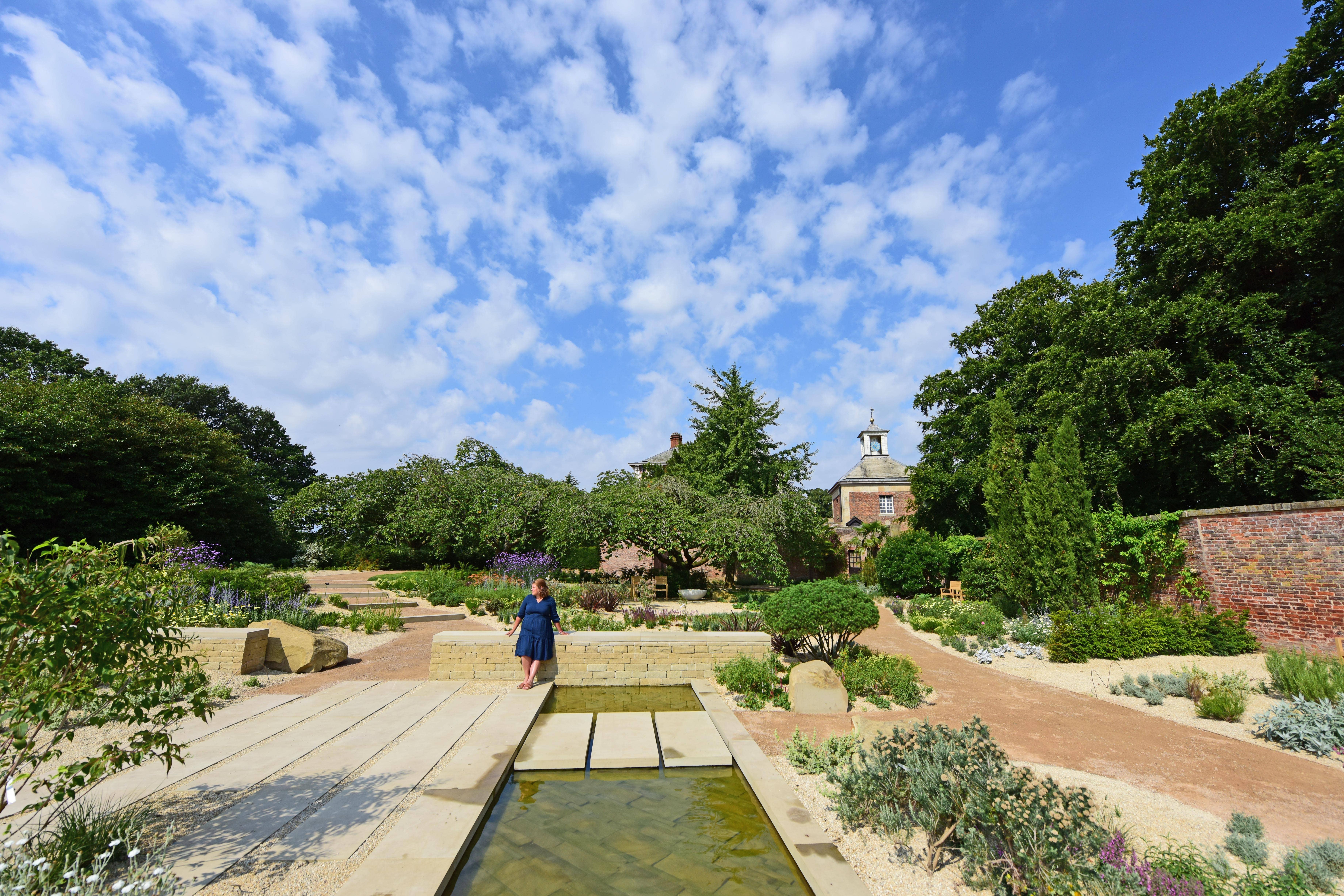Yorkshire stately homes gets Mediterranean garden to cope with changing climate
Beningbrough Hall’s new garden, by award-winning designer Andy Sturgeon, features more resilient plants and pollinator-friendly blooms.

A Mediterranean garden stocked with plants that will be more resilient to a changing climate has been unveiled at a Yorkshire stately home.
The new garden at the National Trust’s Beningbrough Hall near York features more than 4,000 perennials, grasses, trees and shrubs from the Mediterranean and similar climate zones around the world from South Africa to South Korea, Chile, China and Australia.
The plants in the garden have been selected by award-winning designer Andy Sturgeon to be able to cope better with hotter, drier summers and wetter winters, and will not be watered once they have bedded in.
And to help nature, 3,500 of the new plants are on the RHS plants for pollinators list, compared to just 10 in the previous planting scheme for that part of the eight-acre garden at the 18th century Italian-style Baroque hall.
The National Trust said extremes in local weather over the past year have underlined the need to adapt Beningbrough’s garden.
And the charity’s head of gardens and parklands, Andy Jasper said the trust hoped visitors would enjoy the garden, but also “be inspired to future proof their own gardens”.
We need to start changing the way we garden and I have taken the opportunity to embrace this at Beningbrough
He said: “With more intense weather events, including drought and floods, predicted, our gardens need to change to better tolerate extremes.”
Progress to deliver the Mediterranean garden has been held up by the very wet weather in the past year, with rain “almost every day” – an irony which the garden team say is not lost on them.
The gravelled Mediterranean garden, created out of an underused grassed area, is framed by red brick walls, and has a series of long low-walls made from local York stone, boulders and water bowls with miniature lilies.
A large tank has been built under the garden to capture excess rainfall and slowly release it to prevent flash flooding, while a rill flowing into a new pond draws on archive photographs and archaeological research showing the likely presence of a series of ponds and a fountain in this area around 1900.
Plants in the new garden include the “pride of India”, or Indian rain tree, which the National Trust said was a climate change specialist and flowered in summer.
The shrub Ozothamnus “Silver Jubilee”, which has soft grey leaves, comes from New Zealand, while Grevillea “Canberra Gem” is a spider flower from Australia which flowers for six months from late winter.
Golden oats (Stipa gigantea) and red-hot poker (Kniphofia “Tawny King”) also feature in the garden.
Mr Sturgeon, a Chelsea Flower Show gold medallist and Society of Garden Designers awards winner, has been working with the National Trust on Beningborough Hall gardens since 2016, with the Mediterranean garden the largest phase of the project to open to date.
He said: “In the UK we can expect warmer summers with prolonged dry periods and drought, but also an increase in very wet days, particularly in winter.
“We need to start changing the way we garden and I have taken the opportunity to embrace this at Beningbrough.
“What we have created is in effect a vast gravel garden that sits comfortably in the historic setting – I hope that it will feel quite timeless.”
He added: “I think the success of this garden comes from the marriage of the ancient red brick walls, the presence of the Hall towering over it and the elegance and textural beauty of the new planting.”
Head Gardener Sam Shipman said: “Since starting the build in 2023, it has rained almost every day, holding up our progress.
“The irony of building a Mediterranean garden in one of the wettest autumns, winters and then springs on record has not been lost on any of us.”
Beningbrough Hall, set in 380 acres of parkland, was built in 1716, and its historic rooms reopened in 2023 after nearly two years of essential works, while in the eight-acre garden, Mr Sturgeon has already enhanced grand borders, walled kitchen garden and wilderness play area.
Bookmark popover
Removed from bookmarks